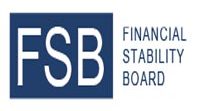The Financial Stability Board has released 10 comment letters in response to its consultative document, “Regulatory Framework for Haircuts on Non-Centrally Cleared Securities Financing Transactions”, initially published in October 2014. These comments are good meat on the bones of the FSB’s initial proposal and should be heeded. Here are some main takeaways:
Amundi: As almost every response suggested, Amundi would like mutual funds to benefit from a haircut level depending on their investment strategy as defined in the fund prospectus, not a “catch-all” classification. We agree with this opinion and expect the FSB to alter their approach accordingly.
Association Francaise de la Gestion financiere (AFG): Strongly favors using the entity-based approach globally since it includes a thorough examination of the concerned entity and a specific assessment of its contribution to systemic risk. Due to this, AFG expects that UCITS and AIFs that do not use significant leverage should remain out of the scope of a regulation on minimum haircut. Unfortunately the worry then becomes the slippery slope of “who’s special and who isn’t?” and “how does one account for changes over time?” Excepting one party due to a general regulatory classification is not going to get far.
Better Markets: First off, Better Markets had by far the most thorough response to the FSB’s proposal. If everyone went to the FSB party in jeans and a t-shirt, Better Markets showed up in a Tom Ford Tuxedo. For those new to the conversation, Better Markets is a non-profit organization that promotes the public interest in financial reform in the domestic and global capital commodity markets, infamously titling themselves as the “Wall Street watchdog with a point of view”. Nonetheless, Better Markets suggests that given the varying national regulatory regimes, entity types and product definitions, using a hybrid of entity based and product based regulation would be more effective than discretely using either of the approaches, noting that specifically using one or the other may facilitate regulatory arbitrage. Better Markets suggests using a hybrid approach, noting that specific exemptions can be provided either via the entity or product channel and that regulators can roll back exemptions if they feel they are too expansive or unwarranted.
ISLA: Suggests that intra-group transactions should be exempt from the numerical floors: “Intra-Group transactions are often undertaken to meet regulation demands… and applying numerical floors to intra-group transactions would appear to be unnecessary.” ISLA suggests haircut floors be restricted to circumstances where the transaction occurs with another non-related legal entity (only).
European Fund and Asset Management Association: Fears that by introducing minimum haircuts for securities lending and repo transactions, that it will lead to the unintended consequence of becoming the de facto norm for these markets and that rather haircut floors, if any, should be set at conservative “backstop” levels, below the prudent market standard for actual haircuts in benign market conditions… We’ve heard this discussion before.
Union Investment: Believes there is a need for a phase-in period in applying numerical haircut floors to nonbank-to-nonbank transactions. They write that the time given should not be less than 24 months, and that the phase-in should be consistent across all jurisdictions.
Here’s our analysis of the FSB’s initial publication.


